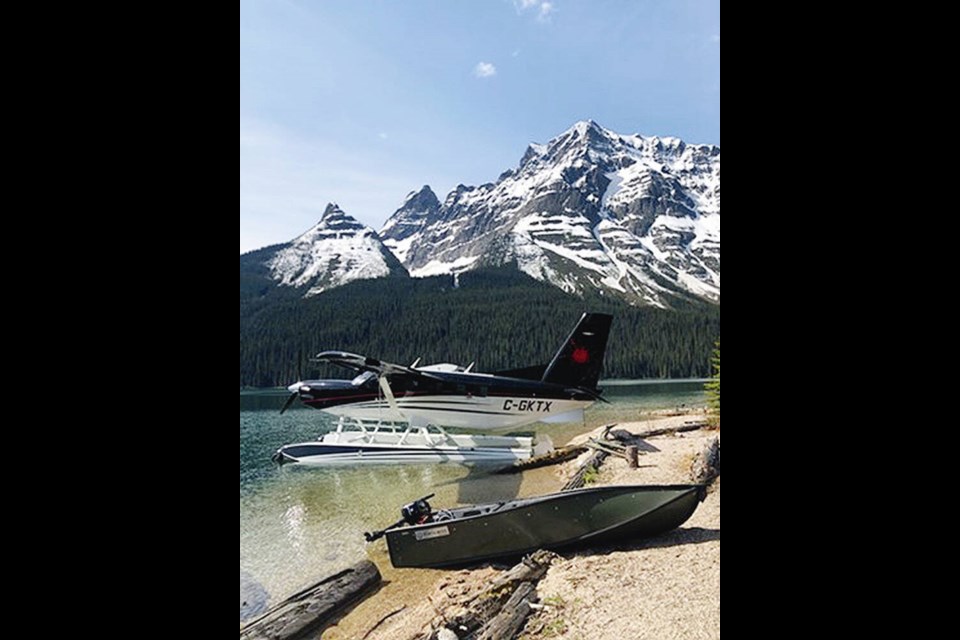A fatal floatplane crash off a remote Vancouver Island inlet last year happened after the aircraft bounced about 30 feet when a float made contact with a boat wake or object, prompting the pilot to do a “go-around,” according to the Transportation Safety Board
During that subsequent attempt to land, the aircraft hit trees and struck the side of a mountain, killing the pilot and one passenger.
Two other passengers sustained injuries in the crash on June 20 about 60 kilometres north of the Tofino Long Beach Airport.
It happened at 1:37 p.m. close to the aircraft’s destination near Mozino Point, where those on board were going to a remote cabin on Tahsis Narrows. The plane had taken off from Masset on Haida Gwaii earlier in the day.
The TSB report said when the pilot, who isn’t named in the report, brought the floatplane to an initial touchdown, both floats touched the surface of the water simultaneously. “The aircraft bounced and, as the aircraft approached the surface of the landing area the second time in a level attitude, the left float reportedly made contact with either a boat wake or object,” TSB investigators said.
“The force of the contact resulted in the aircraft bouncing to a height of approximately 30 feet and banking to the right. The pilot initiated a go-around. During the initial climb over land, the aircraft contacted trees and then impacted the terrain.”
The Quest Kodiak 100 floatplane, a high-wing, single-engine turbine aircraft, caught fire after impact. The TSB investigation did not identify any issues related to the aircraft’s equipment or maintenance that would have prevented it from operating normally during the flight.
The emergency locator transmitter signal was received by the Joint Rescue Coordination Centre in Victoria, and the Canadian Coast Guard, Canadian Armed Forces search and rescue, RCMP and fire personnel responded. The survivors were flown by helicopter to Comox hospital, one with serious injuries and the other with minor injuries.
The TSB report said it’s important that before landing, floatplane pilots evaluate their intended landing site for hazards. “This includes assessing the area for water surface conditions and potential wind shear and downdrafts; ensuring that both the approach and departure paths are free of obstructions; and considering options in the event of a go-around.”
Weather conditions at the time around Tofino included four- to six-knot winds with small sea waves, clear visibility and scattered clouds. The TSB said although exact winds at the crash site were unknown, winds in the mountain ranges can be unpredictable and downdrafts “are not uncommon.”
“Due to the mountainous terrain, it is possible that wind shear and/or downdrafts were present in the area at the time of the accident,” the TSB said.
A downdraft could force an aircraft to the ground, or, if it was flying upwind, it might fail to clear the range, the TSB report said.
In its report, the TSB noted that the U.S. Federal Aviation Administration says it’s good practice for floatplane pilots to circle the area of intended landing and examine it thoroughly for obstructions such as floating debris, and to note any boats that may be in or moving toward the intended landing site.
The FAA also recommends that evaluation of the landing area should include approach and departure paths. “Terrain that rises faster than the seaplane can climb is an obvious consideration, both for the eventual takeoff as well as in case of a go-around during landing.
“If climb out over the terrain is not easily within the seaplane’s capabilities, be certain there is sufficient room to make a gentle turn back over the water for climb. … Remember that it is often best to make a gentle climbing turn back over the water to gain altitude, rather than climbing out over a shoreline with rising terrain.”
The pilot, who had landed once before at the same location, five days before the crash, had a private pilot licence appropriate for the flight in accordance with existing regulations, said the TSB.
The pilot had 250 flight hours on the amphibious aircraft, with about half of the landings on water. Most of the pilot’s water-based takeoff and landing experience occurred on lakes rather than the ocean, the TSB said.
There was no indication that the pilot’s performance was affected by medical or physiological factors, the TSB said.
The registered owner of the 2009 plane, which was based at Cooking Lake Airport east of Edmonton, was listed as Cameron B. Robinson of Sherwood Park, Alta.



